As Vietnam modernizes as a state, one of the challenges it faces is tracking down all the people who live in these myriad islands and providing various public services to them (little things, such as education and health care...). As long as they lived hidden away in caves, that was virtually impossible to do. So the government has been moving the fishermen into organized floating villages -- and our first stop of the morning was to visit one of these villages called Vung Vieng.
As we approached in the dinghy, we could see the tiny houses, floating on pontoons, huddled in a sheltered area between two islands.
The dinghy dropped us at a dock with a map that helpfully oriented us to the layout of the village. Women standing in rowboats waited to take us on a tour of their village.
The village was totally different from what I'd expected. Up to this point, the only other floating village I'd seen was the village we'd visited on Lake Titicaca in Peru. Despite the fact that everything about this place was different from Peru, I guess I expected it to be kind of like that. It wasn't. It was both more modern (these weren't floating "islands" made of woven reeds) and more authentic (tourism was still only incidental to daily life here, whereas in Peru it seemed that the original way of life had been subsumed by the spectacle of "the original way of life" put on for the tourists).
As we entered what appeared to be the main part of the village, I started filming in video -- I wanted you to get a sense of how it felt to glide past these brightly painted boxes, with the buzz of the cicadas, the splash of the oars, and cries of birds and babies.
Our rower pulled up to a cluster of public buildings: a small community center, a visitors center, a public school.
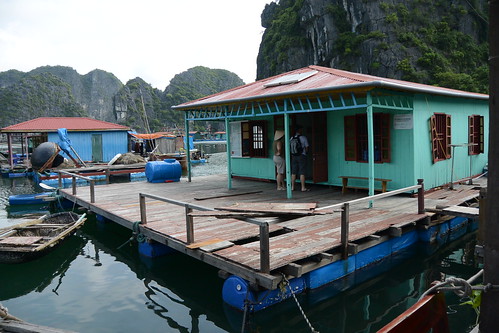 |
| The exterior of the school. |
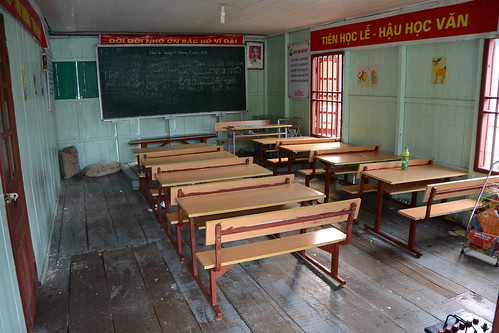 |
| Inside the school |
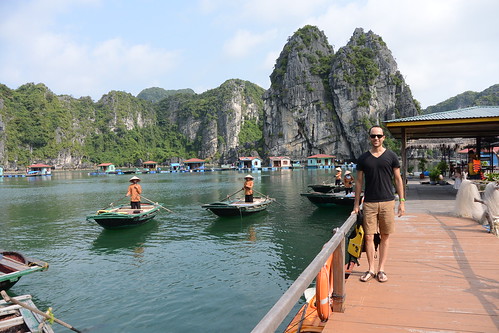 |
| There's our rower in the background. She's waiting to pick us up for the rest of the tour. |
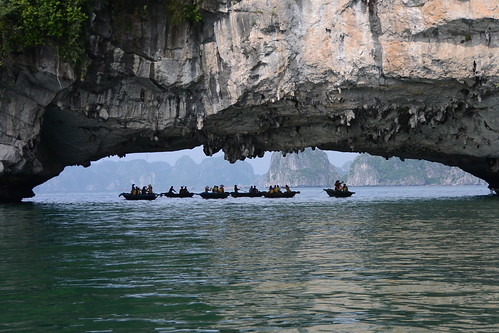 |
| The sea has carved an archway through the mountain. That's the group ahead of us on the other side. |
After we'd made our way through the main part of the village, we came upon a few outlying buildings surrounded by buoys. Suspended from the buoys were oyster boxes. This was a pearl farm.
Here's how it works: First you stick the oyster in a little stand and pry it open with pliers.
Then you insert a small round bead.
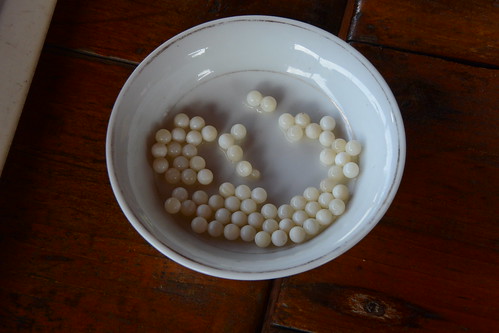 |
| These are the little pearl "seeds." In naturally occurring pearls, the seed would be a grain of sand. But those take forever to make and are really hard to find. |
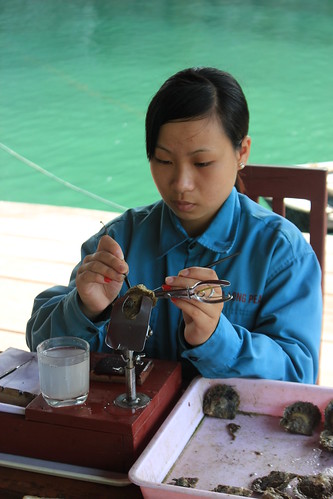 |
| Inserting the bead |
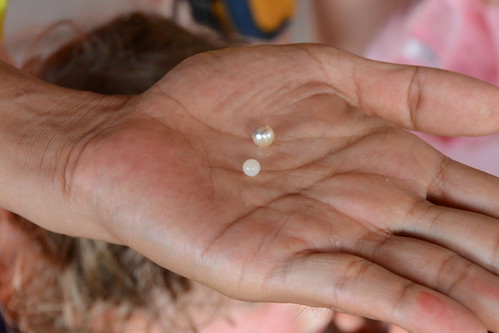 |
| Comparing the seed (below) with the pearl (above) |
Pretty neat process! Makes me appreciate more why real, naturally occurring pearls are so precious.
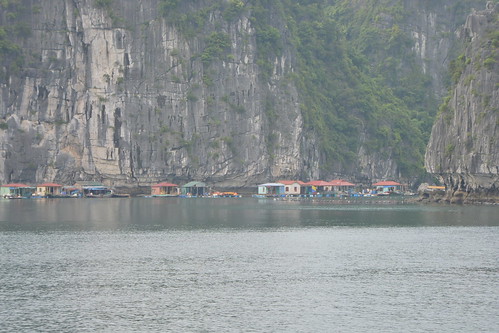
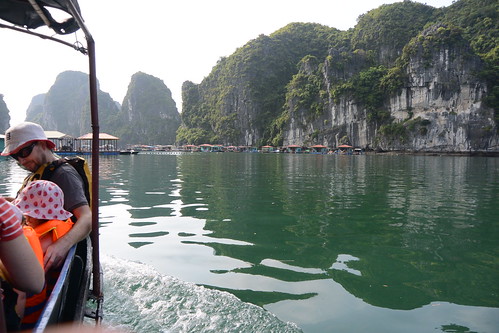


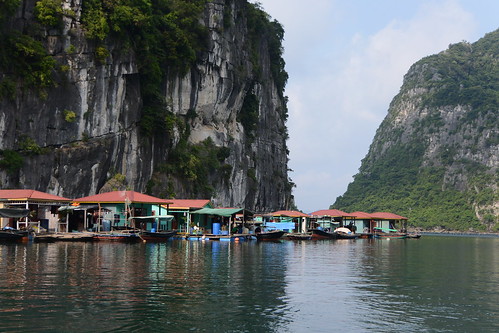
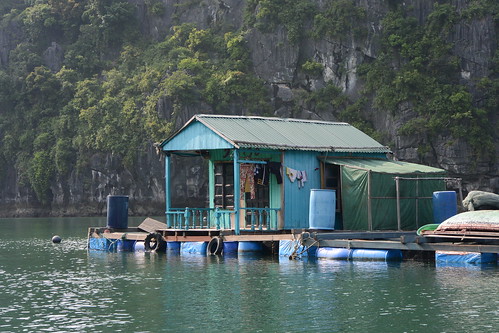
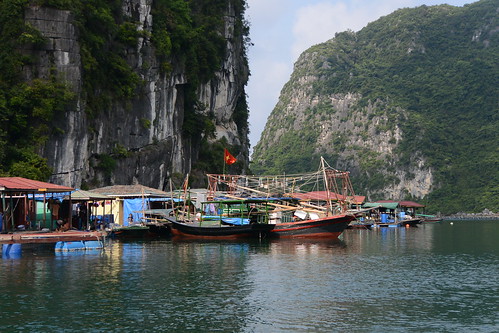
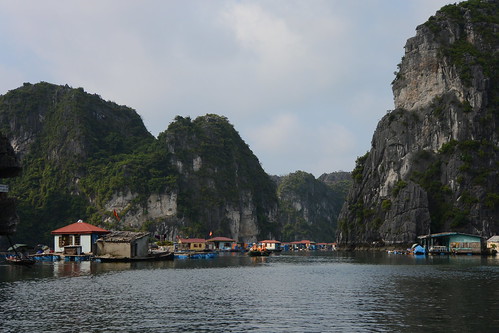
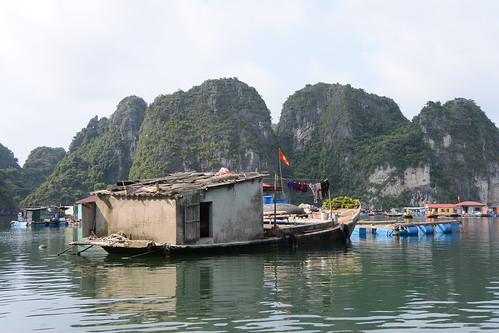
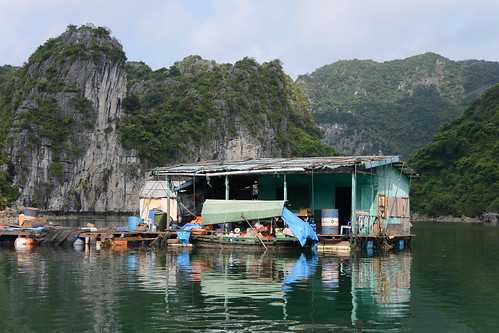
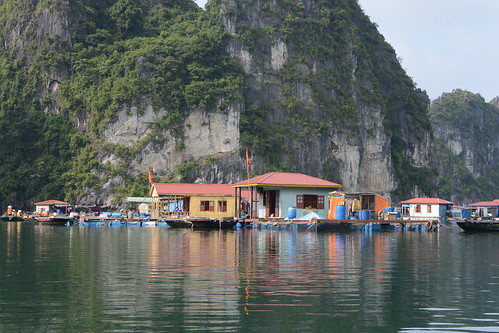
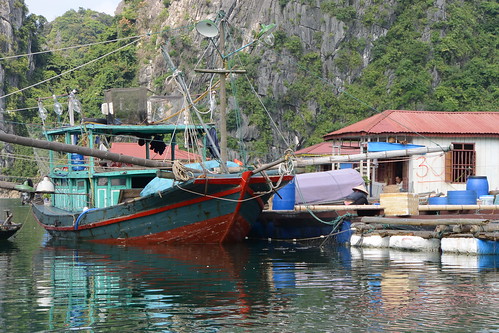
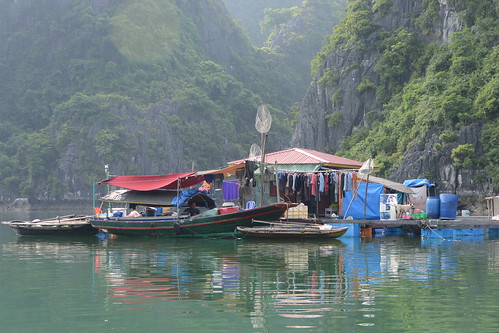
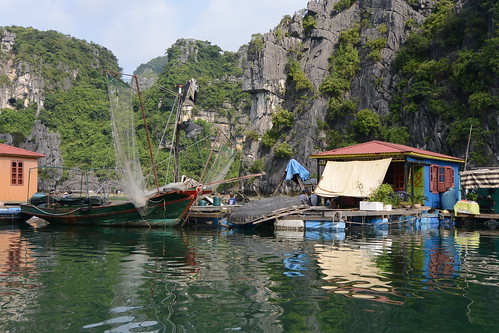
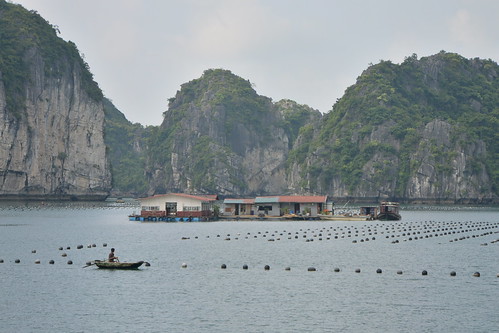
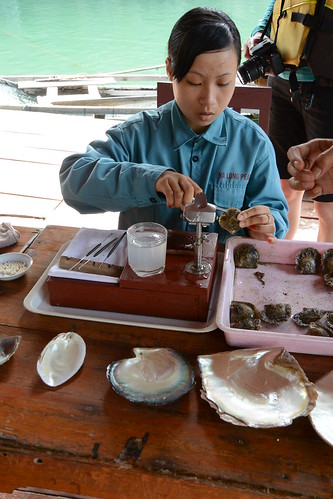

No comments:
Post a Comment